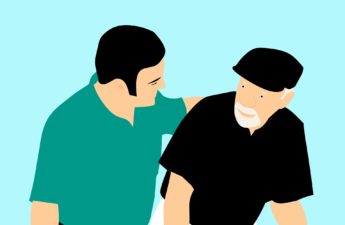
Health Care System Underused in Addressing Social Isolation, Loneliness Among Seniors, Says New Report
From the National Academies of Science
WASHINGTON — Seniors who are experiencing social isolation or loneliness may face a higher risk of mortality, heart disease, and depression, says a new report from the National Academies of Sciences, Engineering, and Medicine.
Despite the profound health consequences — and the associated costs — the health care system remains an underused partner in preventing, identifying, and intervening for social isolation and loneliness among adults over age 50.
For seniors who are homebound, have no family, or do not belong to community or faith groups, a medical appointment or home health visit may be one of the few social interactions they have, the report notes.
The report outlines five goals that the health care system should adopt to help address the health impacts of social isolation and loneliness.
It also offers recommendations for strengthening health workforce education and training, leveraging digital health and health technology, improving community partnerships, and funding research in understudied areas.
Whereas social isolation is defined as an objective lack of social relationships, loneliness is a subjective perception. Not all older adults are isolated or lonely, but they are more likely to face predisposing factors such as living alone and the loss of loved ones, the report says.
The issue may be compounded for LGBT, minority, and immigrant older adults, who may already face barriers to care, stigma, and discrimination.
Social isolation and loneliness may also directly stem from chronic illness, hearing or vision loss, or mobility issues. In these cases, health care providers might be able to help prevent or reduce social isolation and loneliness by directly addressing the underlying health-related causes.
“Loneliness and social isolation aren’t just social issues — they can also affect a person’s physical and mental health, and the fabric of communities,” said Dan Blazer, J.P. Gibbons Professor of Psychiatry Emeritus and professor of community and family medicine at Duke University, and chair of the committee that wrote the report. “Addressing social isolation and loneliness is often the entry point for meeting seniors’ other social needs — like food, housing, and transportation.”
The recommendations in this report represent a vision for how the health care system can identify people at risk of social isolation and loneliness, intervene, and engage other community partners.
Improving Clinical Care Delivery
- Conduct assessments to identify at-risk individuals: Using validated tools, health care providers should perform periodic assessments, particularly after life events that may elevate one’s risk (such as a geographic move or the loss of a spouse).
- Include social isolation in electronic health records (EHRs): If a patient is at risk for or already experiencing social isolation, providers should include assessment data in clear locations in the EHR or medical record.
- Connect patients with social care or community programs: Several state Medicaid programs and private insurers have launched programs that target the social determinants of health. These programs can be more intentionally designed to address social isolation and loneliness, the report says. For example, health care organizations could partner with ride-sharing programs to enable older adults to travel to medical appointments and community events.
As more evidence becomes available, roles that health care providers are already performing — such as discharge planning, case management, and transitional care planning — can be modified to directly address social isolation and loneliness in older adults.
Other interventions that the health care system might consider may include mindfulness training, cognitive behavioral therapy, and referring patients to peer support groups focused on volunteerism, fitness, or common experiences such as bereavement or widowhood.
Strengthening Health Professional Education and Training
Schools of health professions and training programs for direct care workers (home health aides, nurse aides, and personal care aides) should incorporate social isolation and loneliness in their curricula, the report says. Health professionals need to learn core content in areas such as the health impacts of social isolation and loneliness, assessment strategies, and referral options and processes.
Ethical Implications of Health Technology
Technologies that are designed to help seniors — including smart home sensors, robots, and handheld devices — might exacerbate loneliness and social isolation if they are not easy to use or attempt to substitute for human contact. Moreover, the report found that 67 percent of the current assistive technologies in dementia care were designed without considering their ethical implications. Developers of technology should properly assess and test new innovations, taking into account privacy, autonomy, and the rural-urban digital divide.
Research and Evidence Gaps
Funders of research should support studies on the effectiveness of interventions in clinical settings; measures to identify at-risk individuals; and trends among younger adults as they age (such as use of technology and economic trends) that may inform how the health care system should target social isolation and loneliness in the future. More research is also needed on approaches and interventions that best meet the needs of LGBT and ethnic minority populations, the report says.
The study — undertaken by the Committee on the Health and Medical Dimensions of Social Isolation and Loneliness in Older Adults — was sponsored by the AARP Foundation. The National Academies are private, nonprofit institutions that provide independent, objective analysis and advice to the nation to solve complex problems and inform public policy decisions related to science, technology, and medicine. They operate under an 1863 congressional charter to the National Academy of Sciences, signed by President Lincoln.


